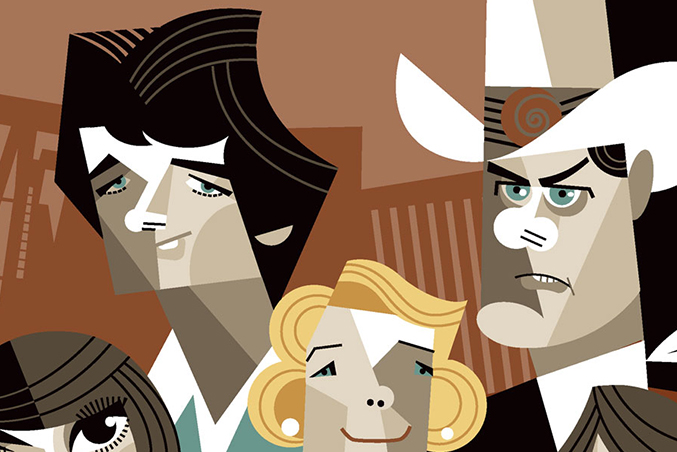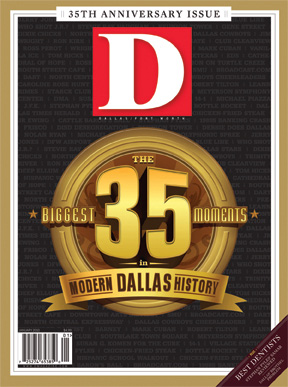In the years leading up to 1978, if you’d asked an average citizen in a typical American city what the name “Dallas” brought to mind, he would likely have hit on the dark day in 1963. The motorcade, the sixth floor, Dealey Plaza, JFK. Then came the TV show, and soon, around the world, we were known for something much less serious.
Before I started my television career at the age of 37, I had been a journalist, the author of a number of books on historical subjects, and a writer of fiction. When I approached teleplays, I came at them the same way I had always approached writing: who are the people I’m writing about? Where do they come from? What brought them from there to here? And—most important—what is it about their histories that ensure that their loves will be volatile, their hates will be toxic, and their conflicts colossal?
Answering those questions puts drama in the structure of the work. You don’t need to have characters constantly screaming at each other. Just put two or more of them in the same room, and you’ve got all the tension you need to tell the story.
The structure of Dallas, of course, is built on the foundation of Jock Ewing and Digger Barnes’ partnership in the wildcatter culture of oil in the 1930s—a partnership that turned to enmity and hatred. It didn’t ease the conflict when both fell in love with Ellie Southworth.
I knew all that history before I wrote “FADE IN” on the first Dallas script. Indeed, I had written it all in a 14- or 15-page-long summary that I thought very exciting. Mike Filerman, the Lorimar executive who had developed the show with me (and my executive producing partner in most of the shows I did later) told me we weren’t going to send the pages into the network.
“Why not?” I asked, deflated. First, Mike said, because it’s never a good idea to leave network executives too much in writing (they’d pore over it). And second, what I’d written was so colorful and rich that he thought the pilot script I was going to write might seem disappointingly tame by comparison. (It probably was.) We didn’t send the back stories in, but we knew them, and knowing them was critical to the development of the Dallas cast of characters.
For a long time, the success of Dallas was a guilty pleasure to me. I was, when I created the show in 1977, the story editor of another show (Family, on ABC), and I had never written a pilot script before. When CBS ordered five episodes to test the show on the air, the experienced producer Leonard Katzman came in to run it—as he continued to do throughout most of the show’s life. But because of the early promise of Dallas, I was able to insist that I run the other shows I created. Naturally, I was thrilled by the success of Dallas and the worldwide phenomenon it became.
Years later, filming Dallas: the Early Years in Dallas and Fort Worth at Christmastime in 1985 was the best experience I ever had making television. It was a great story. The direction, production, and cast were terrific, and the final product was an exciting, rowdy movie that—until There Will Be Blood—was the most realistic depiction of the wildcatters’ world ever put on film. But the most significant thing about Dallas: the Early Years to me was that it reconnected me to Dallas. The series lasted a long time—14 years—and underwent a lot of changes. But it always returned to its core conflicts. As we were making The Early Years, I saw the connections. The series, the stories, the iconic characters all came from here.
There has, since then, been no guilt in my Dallas pleasures.
David Jacobs is a television writer best known for creating Dallas and Knots Landing.






